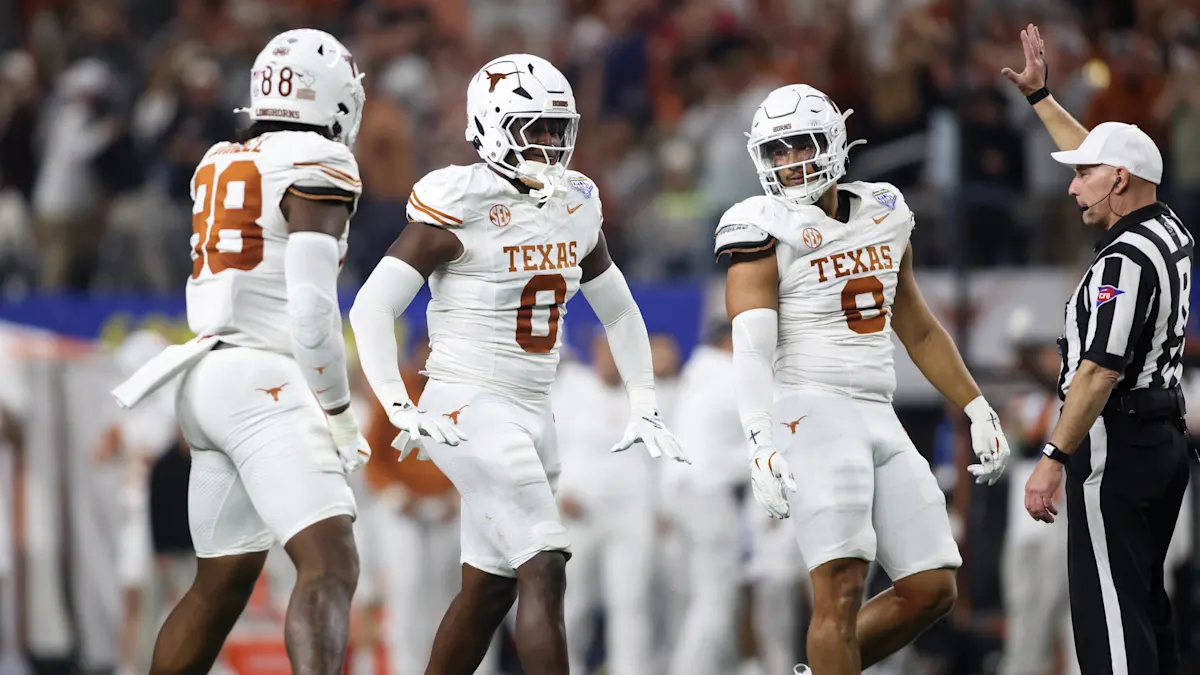EA Sports College Football 26 Sparks Controversy: These Fictional Texas Longhorns Players Are Causing Stir Among Fans and Analysts Alike
EA Sports College Football 26, one of the most anticipated sports video games in years, finally launched with immense fanfare, promising an authentic college football experience. With player likenesses, stadium atmospheres, team chants, and traditions painstakingly rendered, fans were ecstatic to get their hands on the game after more than a decade-long hiatus. However, it didn’t take long before eagle-eyed fans and college football analysts began noticing something strange—certain players on major rosters didn’t seem to match up with real-life players. Nowhere has this sparked more intrigue than with the Texas Longhorns, where a handful of in-game athletes are raising questions about their legitimacy.
Despite the NCAA’s newly relaxed NIL rules, which allowed EA to include real player likenesses with proper compensation, not every player from every school opted in. Some declined the offer for various reasons—contractual obligations, personal beliefs, or the desire to avoid distractions. EA filled those gaps with “generic” players, often designed to roughly match the attributes and skill levels of real-life counterparts. While the publisher has said it wanted to ensure every team was competitive and reflective of their current status, fans are starting to feel duped when they spot names and faces that just don’t seem to exist in the real world.
For the Texas Longhorns, this discrepancy has opened up a new debate. As one of the nation’s premier football programs, expectations are sky-high, and accuracy matters deeply to fans and critics alike. In EA Sports College Football 26, the Texas roster boasts a solid lineup with stars across both sides of the ball. Still, several entries appear to be digital fabrications standing in for real players who opted out—or, in some cases, don’t correspond to anyone at all.
Let’s break down the current Texas Longhorns roster in the game and examine which players fans believe are fictional or questionably represented.
One of the first things that caught the attention of gamers was a standout wide receiver listed as “J. Thomas,” who sports jersey number 14 and has a 90+ speed rating, elite hands, and dazzling footwork. However, when fans cross-referenced this name and number with the official Texas Longhorns roster, no such player appeared. In fact, no receiver on the current Texas squad matches this combination of physical attributes and skill set. While the traits may loosely resemble that of a real-life player who didn’t opt into the game, fans are speculating that “J. Thomas” is entirely fictional—a placeholder to keep the team balanced.
Another mysterious addition is a linebacker named “M. Daniels,” who starts as the team’s middle linebacker in the game and plays with a high football IQ, consistent tackling, and surprising pass coverage ability. In the real world, Texas boasts a strong linebacker corps, but again, no player by that name is listed on the team. Critics have begun to suggest that Daniels is either a fictional composite based on multiple Texas defenders or an outright creation meant to fill a roster spot and maintain competitive balance.
The quarterback room has also sparked confusion. While the game correctly includes a star quarterback whose name and attributes match the real-life QB1—who did opt into the game—backups are where the water gets murky. A player named “C. Allen” appears as the second-string quarterback with solid arm strength and decent scrambling skills, yet no player by that name exists on the Longhorns depth chart. In forums and Reddit threads, Texas fans have noted that the traits and jersey number closely resemble a freshman quarterback who recently joined the program but who did not appear in the EA opt-in list. Thus, “C. Allen” is believed to be a renamed, altered version meant to stand in for a real player whose rights couldn’t be secured.
On the offensive line, a tackle named “R. Garcia” is another source of debate. EA gave Garcia an overall rating in the mid-80s, making him one of the stronger linemen on the roster. But a thorough examination of the Texas roster and recruiting reports over the last three cycles turned up no one matching that profile. While it’s possible Garcia is based on a redshirt player or an incoming transfer who wasn’t yet officially listed at the time of EA’s development window, the consensus is that Garcia is another non-existent athlete added for depth and balance.
The defensive backfield offers perhaps the most blatant example of fictional insertion. “T. Watkins,” a cornerback with blazing speed and lockdown coverage, has become an instant fan favorite in gameplay, but Texas fans were quick to call out the absence of any Watkins on the real team. Even more curious is that Watkins’ build and style of play seem lifted directly from a former high school prospect who verbally committed but later decommitted from the Longhorns. Could EA have retained early data and simply re-skinned it? It’s speculative, but it raises ethical questions about how far a game developer can go when using real-world data that’s ultimately discarded.
EA Sports has addressed concerns like these in broad terms. In a pre-release FAQ, they acknowledged that not every FBS player would be included in the game and that fictional or “generic” players would fill those gaps. However, they also promised that such characters would not be direct clones of real players to avoid legal and ethical issues. Despite this, the similarities are sometimes too close to ignore, and for a program as high-profile as Texas, the inclusion of such placeholders feels like a letdown to purists who wanted the most accurate possible experience.
Adding to the confusion is the game’s Dynasty Mode, where players can take control of a program and guide it through seasons of recruiting, development, and gameplay. In this mode, fictional players are expected—once you get past the first few seasons, real players graduate, and the game generates new athletes automatically. But to see those generated names already populating current-day rosters, especially at a blue-blood program like Texas, gives the mode an unintended artificial feeling. It’s one thing to lose realism in year four of your Dynasty—it’s another to feel like your 2025 roster wasn’t real to begin with.
There’s also the issue of how these fictional players perform. Some fans have pointed out that several of these “fake” Longhorns are overperforming, dominating at their positions and outperforming more realistic counterparts. This could be an attempt by EA to maintain competitive integrity, especially if several high-profile players opted out and left the team too weak. But again, it raises questions about fairness and authenticity.
One area where the game does get it right is with Texas’s overall team identity. The schemes, uniforms, stadium atmosphere, crowd chants, and playbooks all scream Longhorn football. The burnt orange and white uniforms shine under the simulated lights of Darrell K Royal–Texas Memorial Stadium. “Texas Fight” plays proudly, and the game even includes Bevo, the team’s live longhorn mascot. For many fans, this authenticity helps offset the issues with player representation. But for hardcore Texas supporters, it’s difficult to look past the digital imposters standing in for their beloved stars.
Ultimately, the presence of fictional players on the Texas Longhorns roster in EA Sports College Football 26 represents a trade-off between access and accuracy. The game had to meet production deadlines, work within legal frameworks, and respect player choices. When dozens of athletes across the nation declined to be featured, EA responded the only way it could—by filling in the gaps. But in doing so, it introduced a layer of artificiality that, while perhaps necessary, feels jarring for fans expecting perfection.
As more players opt in over time—either through future updates or next year’s iteration of the game—EA will likely get closer to delivering a fully authentic college football simulation. Until then, Texas fans will have to live with “J. Thomas,” “M. Daniels,” and “T. Watkins,” knowing that while their skills may win virtual championships, their real-world existence is questionable at best. It’s a strange new world in sports gaming, where NIL rights, licensing deals, and digital authenticity all collide—and no team, not even the Texas Longhorns, is immune from the chaos.



